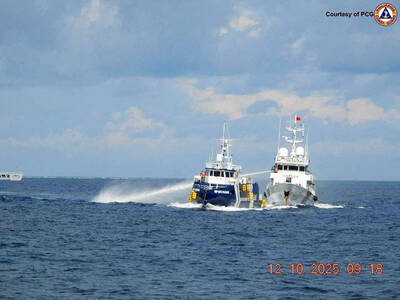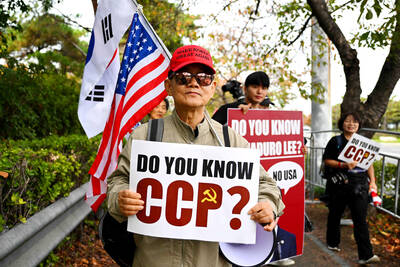At the moment, hydrogen seems to be the most practical way to power vehicles that do not emit carbon dioxide, the principal greenhouse gas. But despite considerable research, many hurdles remain. Here are some questions and answers:
Q: Where does hydrogen come from?
A: Hydrogen, an odorless, colorless gas, is the lightest and most plentiful element in the universe. It is found in water and in most organic matter, but it is usually bound with other elements. For that reason, it is called an energy carrier, meaning that energy has to be expended to extract it.
Q: But can't it be burned in an engine?
A: Fuels like coal, natural gas or oil can be taken from the ground and used with relatively little energy-intensive processing. But hydrogen must be turned into a fuel — and because it takes so much energy to produce, it should not be thought of as a direct replacement for fuels like gasoline. Rather, it is energy in a portable form, somewhat akin to electricity.
Q: Then why bother?
A: Because aside from being plentiful, it is very clean. Cars running on hydrogen produce very little tailpipe pollution and no greenhouse gases — they leave only a trail of water. In this way, cars running on fuel cells — which produce electricity by a chemical reaction of hydrogen and oxygen — would produce no tailpipe emissions.
Q: What is hydrogen used for today?
A: It has several uses. About 8.2 million tonnes of hydrogen are produced annually in the US, mostly for chemical production, petroleum refining and metal treatment.
Q: Can nuclear power be a source of inexpensive hydrogen?
A: Yes. Kenneth Schultz, operations director of the energy group at General Atomics, a research and development firm in San Diego, said that by 2025 the nuclear industry could be able to produce hydrogen for US$1.50 to US$2 a kilogram. But Amory Lovins, chairman and chief scientist at the Rocky Mountain Institute, a nonprofit energy research organization in Snowmass, Colorado, described both the process and the price as "aspirational."
Q: How will we use hydrogen in a motor vehicle?
A: There are several options. In the most common prediction, compressed hydrogen gas is stored in a reinforced tank aboard a car, then fed to a fuel cell. The cell is not an engine, but a small chemical factory that converts the pressurized gas to electricity, which runs an electric motor. The only emission is water.
Liquid hydrogen offers excellent energy density per volume, but it would have to be carried in cryogenic tanks because hydrogen doesn't liquefy until it reaches -97°C.
Metal hydrides offer an opportunity to store hydrogen in solid form, but such a system is heavy and therefore reduces the vehicle's travel range.
Hydrogen can also be burned in internal combustion engines. BMW and Ford, among others, have programs exploring hydrogen combustion, and BMW has a small fleet of bi-fuel 12-cylinder Hydrogen 7 vehicles on the road. No carbon dioxide is produced when hydrogen is burned.
Q: Is hydrogen safe? Isn't it very explosive?
A: That's the question on everybody's minds. Hydrogen definitely has safety challenges. It is extremely flammable (as the 1937 Hindenburg accident demonstrated), and burns without a visible flame while radiating very little heat. Because it is the lightest element, it can easily leak out of very small holes, pipe joints and even some metals. Once leaked, it can concentrate in a sealed space like a garage roof, presenting a fire hazard because hydrogen in a confined space can catch fire more easily than gasoline.
But hydrogen's lightness is also an advantage, because the gas dissipates in the air 12 times faster than gasoline vapor, making it harder for a fire to start. And automotive hydrogen fuel tanks, often made of composite materials, are designed to minimize leakage even in a severe impact. Quantum Fuel Systems of Irvine, California, says the hydrogen tanks that it makes go through two dozen tests and are shot with guns, suspended over fire, put through pressure cycles and subjected to temperatures ranging from -40° to 54°C.
Q: How will hydrogen be distributed to gas stations?
A: Very carefully, because hydrogen is such an escape artist that it is difficult and expensive to move. The hydrogen infrastructure is embryonic: There are about 1,130km of hydrogen pipelines in the country, compared with 1.6 million kilometers for natural gas. One challenge is that hydrogen pipelines have to be very tightly sealed and specially treated so that they do not become dangerously brittle. Trucking hydrogen not only burns fossil fuel, but requires energy-consuming compression, and even then a truck can carry far less energy than an equivalent gasoline tanker.
Q: How long before I can buy a hydrogen-powered car?
A: Honda says it will offer a limited number of its new-generation FCX fuel-cell vehicles for lease in 2008. Several companies, including BMW, General Motors and DaimlerChrysler, are building test fleets of as many as 100 hydrogen vehicles. Currently, the high cost of manufacturing the vehicles and setting up the hydrogen infrastructure mean it could be two decades before affordable hydrogen-powered cars and trucks are widely available. And it might never happen at all.

Many people noticed the flood of pro-China propaganda across a number of venues in recent weeks that looks like a coordinated assault on US Taiwan policy. It does look like an effort intended to influence the US before the meeting between US President Donald Trump and Chinese dictator Xi Jinping (習近平) over the weekend. Jennifer Kavanagh’s piece in the New York Times in September appears to be the opening strike of the current campaign. She followed up last week in the Lowy Interpreter, blaming the US for causing the PRC to escalate in the Philippines and Taiwan, saying that as

US President Donald Trump may have hoped for an impromptu talk with his old friend Kim Jong-un during a recent trip to Asia, but analysts say the increasingly emboldened North Korean despot had few good reasons to join the photo-op. Trump sent repeated overtures to Kim during his barnstorming tour of Asia, saying he was “100 percent” open to a meeting and even bucking decades of US policy by conceding that North Korea was “sort of a nuclear power.” But Pyongyang kept mum on the invitation, instead firing off missiles and sending its foreign minister to Russia and Belarus, with whom it

The Chinese Communist Party (CCP) has a dystopian, radical and dangerous conception of itself. Few are aware of this very fundamental difference between how they view power and how the rest of the world does. Even those of us who have lived in China sometimes fall back into the trap of viewing it through the lens of the power relationships common throughout the rest of the world, instead of understanding the CCP as it conceives of itself. Broadly speaking, the concepts of the people, race, culture, civilization, nation, government and religion are separate, though often overlapping and intertwined. A government

Nov. 3 to Nov. 9 In 1925, 18-year-old Huang Chin-chuan (黃金川) penned the following words: “When will the day of women’s equal rights arrive, so that my talents won’t drift away in the eastern stream?” These were the closing lines to her poem “Female Student” (女學生), which expressed her unwillingness to be confined to traditional female roles and her desire to study and explore the world. Born to a wealthy family on Nov. 5, 1907, Huang was able to study in Japan — a rare privilege for women in her time — and even made a name for herself in the